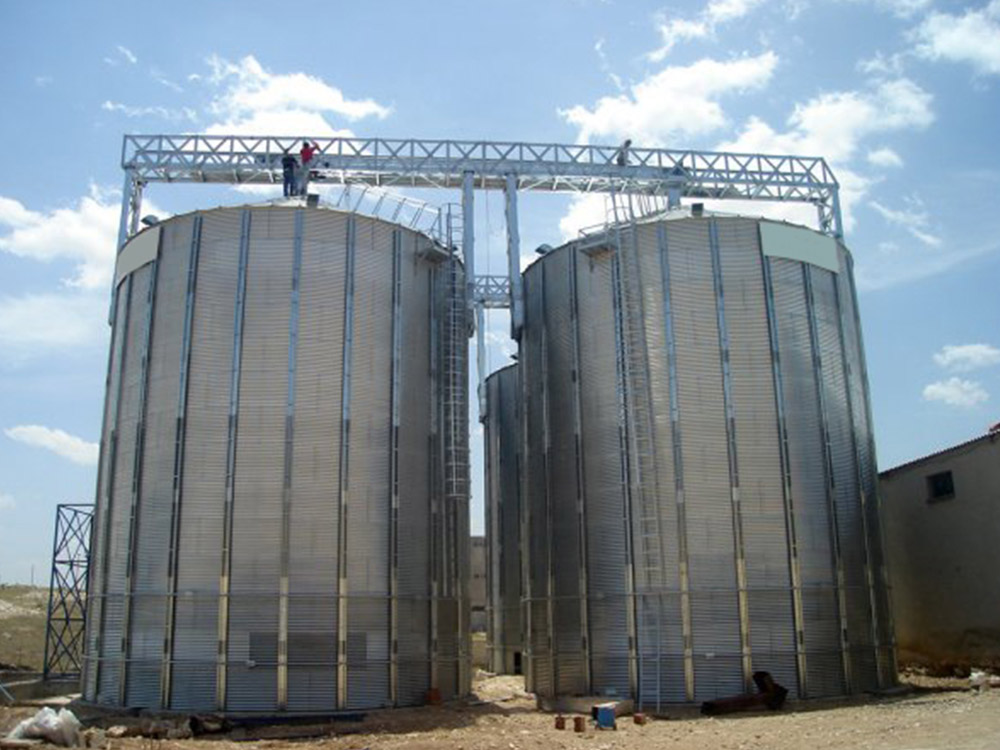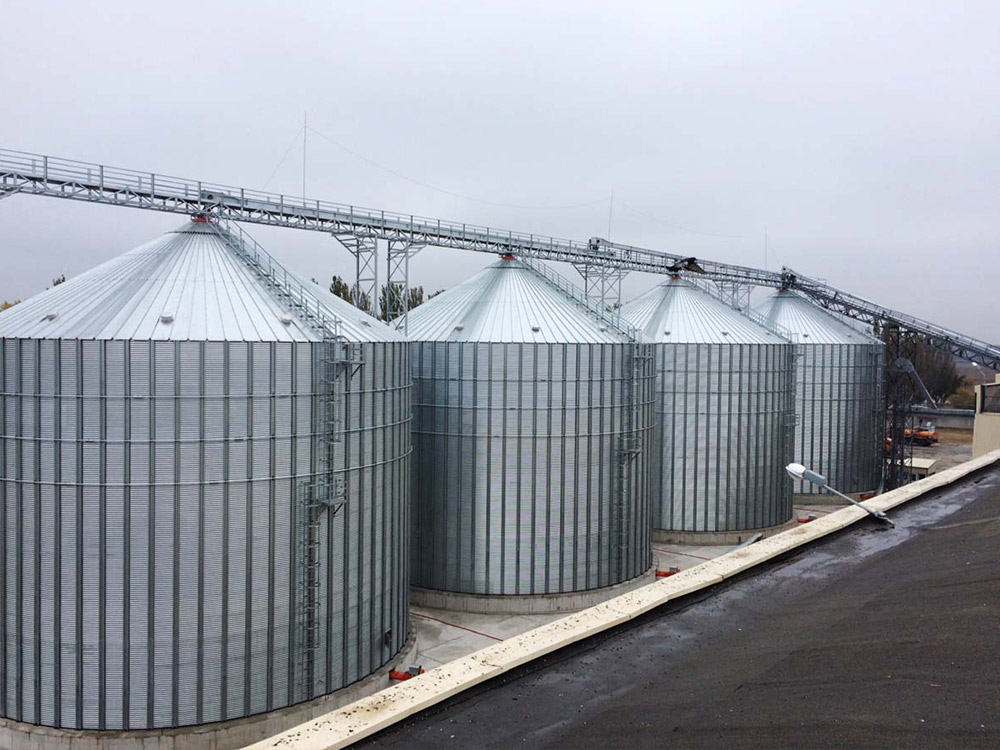(8) Are there any abnormalities in the brackets connected to the civil construction?
3.In order to Ensure the Safety of Grain Storage, the Main Grain Storage Technologies are:
(1)Grain condition detection: The use of computer electronic detection technology provides a means to understand the grain storage status of deep grain piles at any time, which is extremely beneficial to grasp the dynamics of grain condition changes and take corresponding measures in a timely manner.
(2)Drying control: By controlling the moisture content of stored grain, create a low-moisture environment that is not conducive to the growth of insect mold, such as low-temperature drying and mechanical ventilation. The drying tower consists of a storage layer, a drying layer, a conditioning layer, a cooling section, a grain discharging mechanism, an emergency grain unloading mechanism, a tower bracket, a hot air inlet mechanism, a dehumidification mechanism, a hot air fan mechanism, a cooling fan mechanism, and supporting motors. and other components. Often used in large-scale grain storage projects. It is suitable for high-quality drying of rice, sorghum, soybeans, corn, wheat and other grains. The grain dried by the drying tower can reach the moisture standard for safe storage, and can be stored with confidence. The mechanical ventilation system is an organic combination of centrifugal fans at the bottom of the silo, main air ducts, branch air ducts, and air volume distributors.

(3)Temperature control: By controlling the ambient temperature of stored grain, create a low-temperature environment that is not conducive to the growth of insect mold, such as low-temperature grain storage and grain cooling. Low temperature can inhibit the respiration of grain, reduce dry matter loss, delay grain aging and quality deterioration, and maintain the freshness and eating quality of grain. Low temperature can control the growth and development of insect mold, reduce pest damage, and prevent food from heating, condensation, and mildew.
(4)Gas control: By changing the gas ratio of the grain storage environment, the purpose of killing insects, inhibiting mold, and maintaining the original quality of grain is achieved, such as low oxygen (1-4%), high CO2 (>36-40%) , high N2 (>99%), etc.
(5)Chemical control: Use the poisonous gas produced by chemicals to block the normal metabolic process of insect mold to achieve the purpose of insecticide and bacteriostasis, such as fumigation with chemicals, bacteriostasis with organic acids, and food protection with protective agents.
4.Requirements After Grain is fed into Grain Silo
① Check the grain temperature
Inspection time: Grain temperature is affected by the temperature in the silo and the external temperature, so when checking the grain temperature, you must check the temperature in the silo and the temperature at the same time. It is best to check the temperature at eight or nine o'clock in the morning, because the temperature at this time is closer to the average temperature throughout the day.
②Check temperature and moisture
Temperature measurement: Under current technical conditions, only the temperature and silo humidity are generally checked. It is commonly measured with a hair hygrometer or wet and dry bulb thermometer.
Moisture inspection: During storage, safe grains should be measured once a month; semi-safe grains should be measured every three days. In areas where the grain temperature is abnormal and where there are insects or mold, the moisture content must be measured separately.
③Pest inspection
Only live pests are considered infected, and dead pests found can be classified as impurities. However, the presence of dead pests requires more precise and repeated inspection and analysis of their infectivity.

.jpg)

